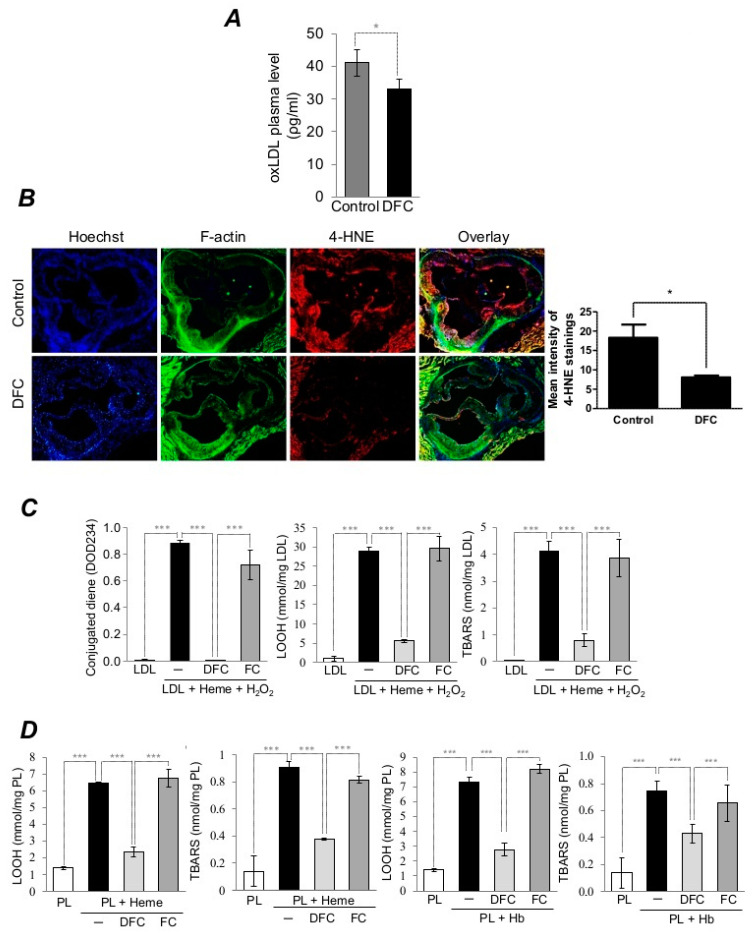Figure 2.
DFC inhibits lipid peroxidation of plaque lipids and LDL in ApoE−/− mice and suppresses heme/hemoglobin-catalyzed oxidation of lipid of human atheromatous plaque and LDL. Eight-week-old ApoE−/− mice were fed ad libitum with an atherogenic diet containing 5% fat and 1.25% cholesterol and divided into DFC group receiving 160 mg/kg intraperitoneal DFC and control group receiving physiological saline every second day for 8 weeks. (A) Quantitative analysis of plasma oxidized LDL (oxLDL) levels of DFC-treated and control mice (n = 5) are shown. (B) Immunofluorescent analysis of lipid peroxidation in the aortas of DFC-treated and control mice. Aortas (5 per group) were stained for DNA (Hoechst 33258, blue), F-actin (cytoskeleton, phalloidin-FITC, green) and 4-Hydroxynonenal (4-HNE, AF647, red). Quantification of 4-HNE mean intensity was performed with Image J software. Scale bar: 0.2 mm. (C) Conjugated dienes, lipid hydroperoxides (LOOH) and thiobarbituric-acid-reactive substances (TBARs) contents of LDL samples exposed to heme (5 µmol/L) and H2O2 (75 µmol/L) in the presence or absence of DFC (50 µmol/L) or FC (50 µmol/L) were measured. (D) LOOH and TBARs contents of plaque lipids (1 mg/mL) exposed to heme (5 µmol/L) or Hb (5 µmol/L) in the presence or absence of DFC (50 µmol/L) or FC (50 µmol/L) were measured. The graph shows the mean ± SEM of three separate experiments. *p < 0.05; ***p < 0.001.

